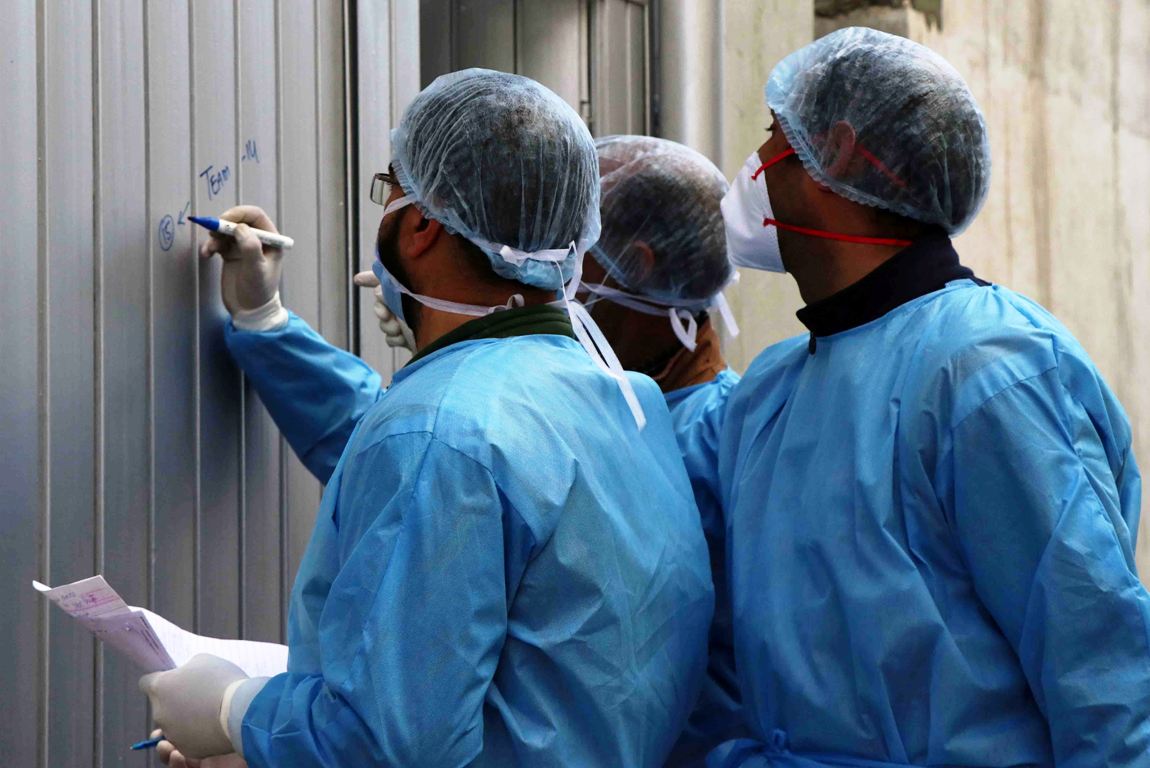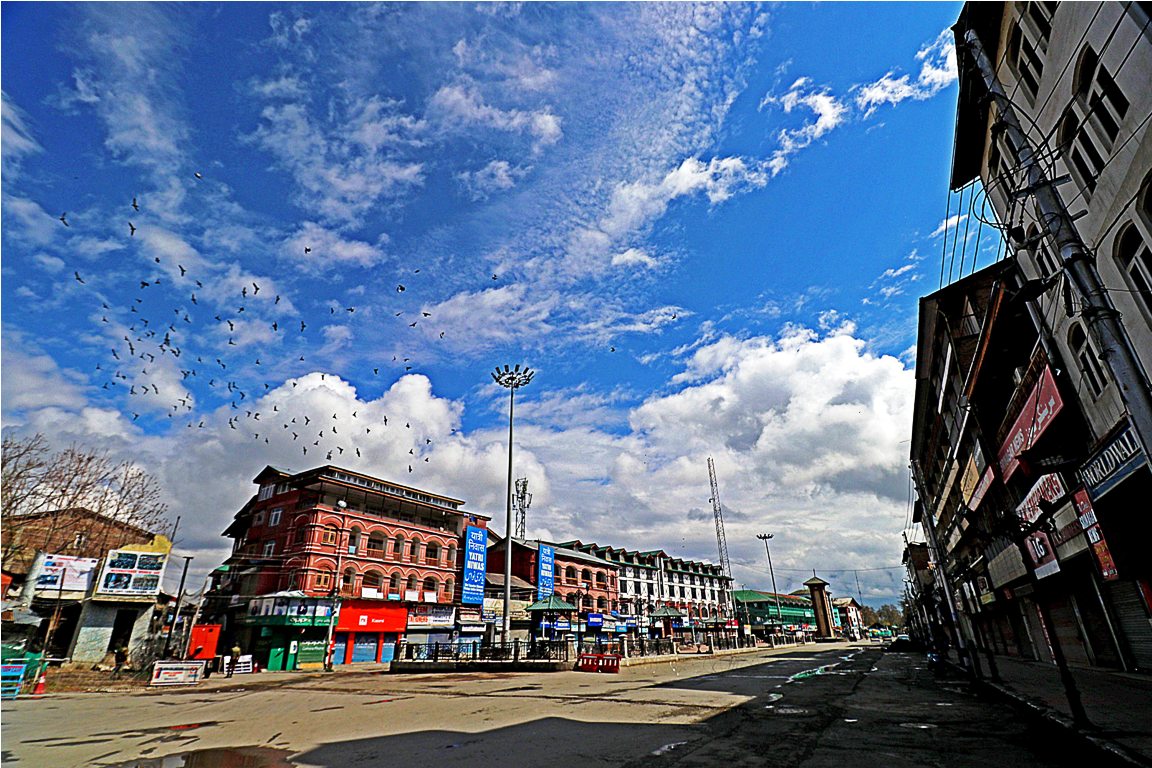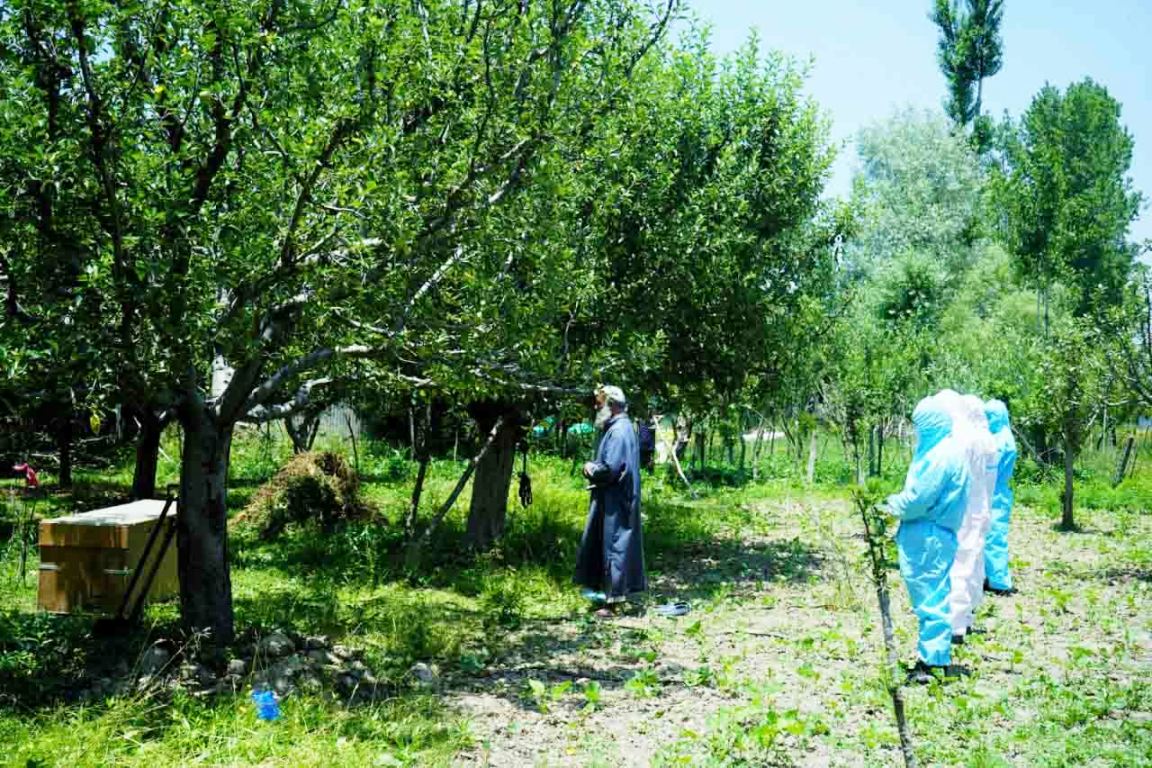In the last more than a year, the people picked enough knowledge about the virulent and vile virus that it helped them to live in peace with the invisible despite mounting costs, reports Syed Samreen

From deserted roads to busy marketplaces, from using hand sanitisers religiously to using them once a while, from washing hands an infinite number of times to only washing them when needed, from changing masks more often to reusing them, finally, Kashmir has started to co-exist with the virus and its mutants that cause Covid19.
Whenever a positive case was confirmed in a locality, squads from the Srinagar Municipal Corporation (SMC) used to swarm in and sanitize the house of the infected individual and the entire locality.
When the first Covid19 case was confirmed on March 18, 2020, Kashmir was horrified. By 5 pm, the twin roads of Residency Road and M A Road were deserted. It was a real headache for patients to hide their identities because the stigma was in vogue and had almost an official sanction.
Surging Toll
Even though the death toll has crossed 3200, authorities are scared to somehow ensure the curve flattens; the society is trying to co-exist and live in peace with the virus that has wrought destruction in places like Utter Pradesh and Punjab. So the civil society continues to cooperate with the established systems to reduce the number of infections and the overall mortality of the disease.
But how this change took place in a year?

There are varied reasons. The particular virus or its mutations might be the only virus that was studied and investigated so quickly that people picked the knowledge on daily basis. A quick understanding of the modes of transmission is key to this change.
In 2020, when the people were least educated about the virus, they would do anything and everything to stay safe – wear gloves to the markets, sanitize each and everything they purchase, literally run away from anyone and everyone; wash vegetables and fruits strenuously. Not anymore.
Dr Suhail Naik, who till recently headed the Doctors’ Association of Kashmir (DAK) attributes the change to phenomenal human adaptability.
“Initially when the news of the virus broke out, the humankind behaved apprehensively and even agreed to not taking to streets and markets for a long period,” Dr Naik said. “But now, as you can see, everything seems normal. This is because we got adapted to the situation around us. We learnt to live with it. Our brain got accustomed to the fear around us.”

People picked the knowledge and took precautions. “They assessed the virus and observed its pattern and came to a conclusion that only a limited number of people die from this disease,” the doctor said. “People with co-morbidities are at a greater risk of dying after contracting the virus. People understood this disease kills only a limited proportion of people with co-morbidities, immune problems.”
This is the key factor why people have discovered their comfort level. “Last year, it took 100 days to reach 1000 cases despite lockdown and restricted movement,” Dr Naik said. “In 2021, even four to five thousand cases are reported daily.”
Changed Protocols
In the last year, the counter-Covid19 protocols also changed. The systems were clear. There was supposed to be isolation in cases of travel and that was officially managed and enforced. In case of positive cases, all the contacts would move to places of the choice of respective Deputy Commissioners. There was an emphasis on isolation, segregation but hardly anybody would talk about protein-rich food. These protocols had created a fear psychosis and countless families suffered indignities of lopsided Covid19 management. By the way, it was officially suggested that names of the people who die of the disease should not be made public. It hugely compromised the dignity in death.

A year later, the pandemic may be surging and seemingly ferocious but most of the ‘sicknesses’ linked with the disease have ceased to exist. Contact tracing of the infected has stopped. It was an elaborate exercise involving the best surveillance systems working under an SSP rank officer. Covid19 patients, now isolate themselves in the comfort of their homes. Similarly, the contact tracings, quarantining of even the negative patients who had come in contact with the positive ones has come to an end.
The formal bed capacity with Oxygen support is not more than 5400 in established hospitals. It means less than 10 per cent of the Covid19 positive cases are admitted to the formal healthcare system. Jammu and Kashmir has more than 50,000 active cases, two-third of them in Kashmir alone.
“Last year there were policy problems and not problems with hospitals or infrastructure,” one doctor said. “Now most infected people are sent home as a policy matter. Large chunk of moderately ill people are managing their illness at home and it is working”. DAK, by the way, was the first and the only professional body that suggested to the government that Covid19 will require home management. However, the Jammu and Kashmir administration has not given any counter-Covid19 role in the policymaking to the doctors.
Right now the protocol demands that patients with bilateral pneumonia or other complications must be admitted to the hospital. It is no more the plague-style management.
Quarantine Processes
As the pandemic fears forced Kashmiri students and traders to flee from offshore destinations and reach home, they all were taken to multiple quarantine centres for 14 days. A big chunk of hotels was taken over by the administration and it would require a chain of officers to manage their requirements and the inmates.

Now, travellers land at Srinagar airport, line up in a queue, go for a highly doubtful RAT (especially if it is negative) and check into the hotels. “In every hotel, isolation rooms have been set up,” Srinagar Deputy Commissioner, Mohammad Aijaz Asad, said. “If someone tests positive, they’re quarantined and isolated there.” He acknowledged that the Covid19 management has phenomenally changed in the last year. “People have learnt their lesson, which is why certain unnecessary things that were done are not being done now.”
Stigamitisation
At the beginning of the crisis, the biggest stigma attached to the pandemic was in the burial of the Covid19 deceased. In Kashmir, burial is a major activity – expensive and professionalised in the city, unlike the periphery.
In Srinagar, in one case, police had to manage the burial as the family refused to be part of it (Later, they said they were all positive and in enforced quarantine). In another case, when a family of the deceased hesitated to bury the dead, a Bemina youth, Sajad Khan, set up a team of volunteers and started lowering the dead into their graves.

At places, some people even engaged earth-removers to dig graves for the dead. In Sopore, a family was forced to bury their Covid19 dead in an apple orchard.
All this has changed completely after the Covid19 started making casualties in the periphery. People started with burying the Covid19 dead in wooden caskets. In the second stage, they were kept in body bags. The people engaged in the funeral process take due precautions by using PPE kits and offering dignified burials. The stigmatisation of the families is fortunately over now.

On his part, the Joint Commissioner, Srinagar Municipal Corporation, Syed Abul Qasim said that they continue with the sanitization process without any interruption.
“This virus was new to us. We didn’t know what was to be done and whatnot,” Qasim said. “Now that it has been over a year, we have learnt to live with it. We now know what works for us and what doesn’t. Masking up, washing hands and maintaining distance has become a new normal for all of us.”
At the same time, however, the virus unleashed its mutants on people, especially in India, and it has forced people to have rethink every time they wish to lower their guards. “This virus can do anything and it can vary from person to person,” one doctor said. “It is now clear that unlike the start when everybody thought that it hardly impacts young, or children. That is all untrue. It impacts all and it kills people of all ages mercilessly.”















